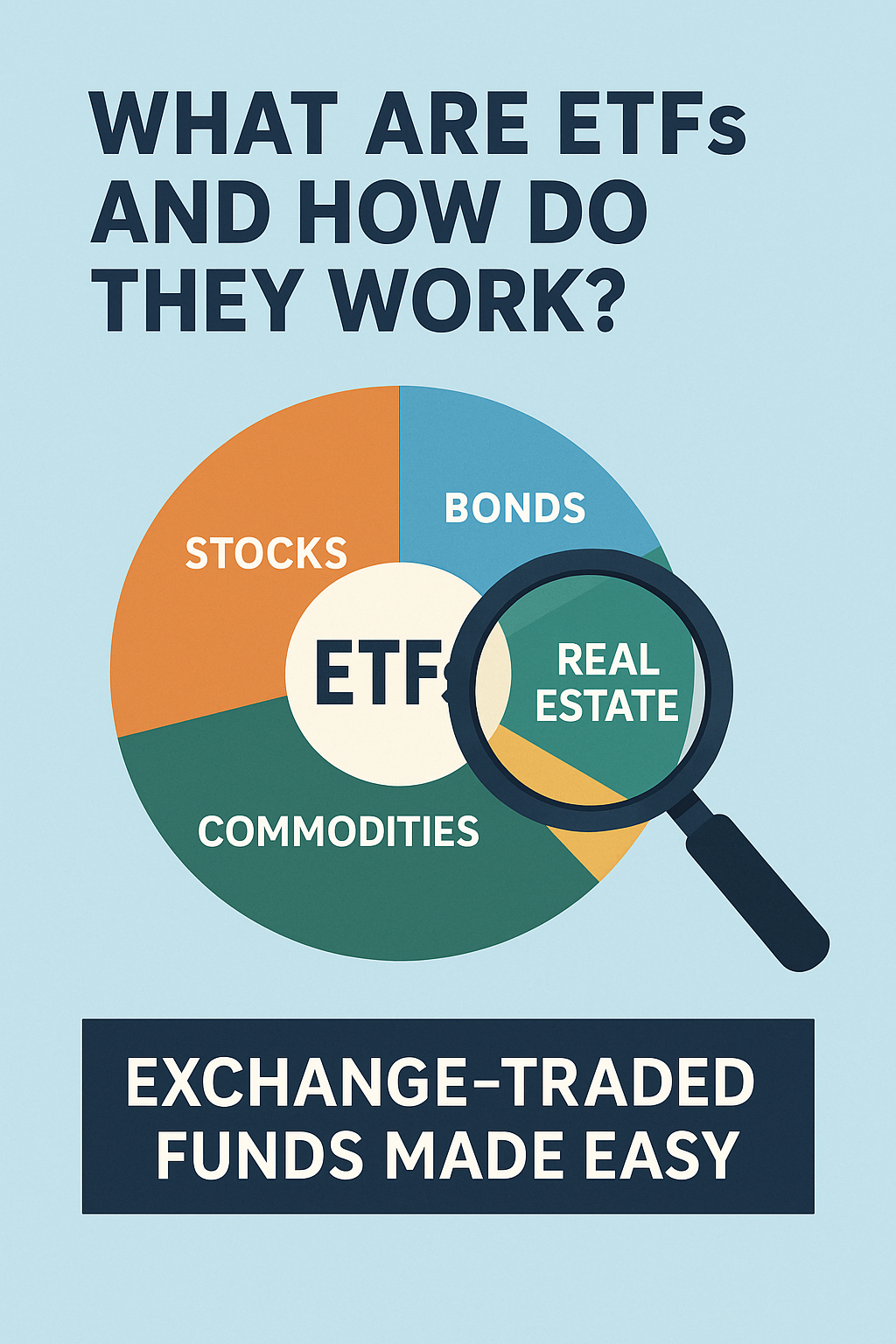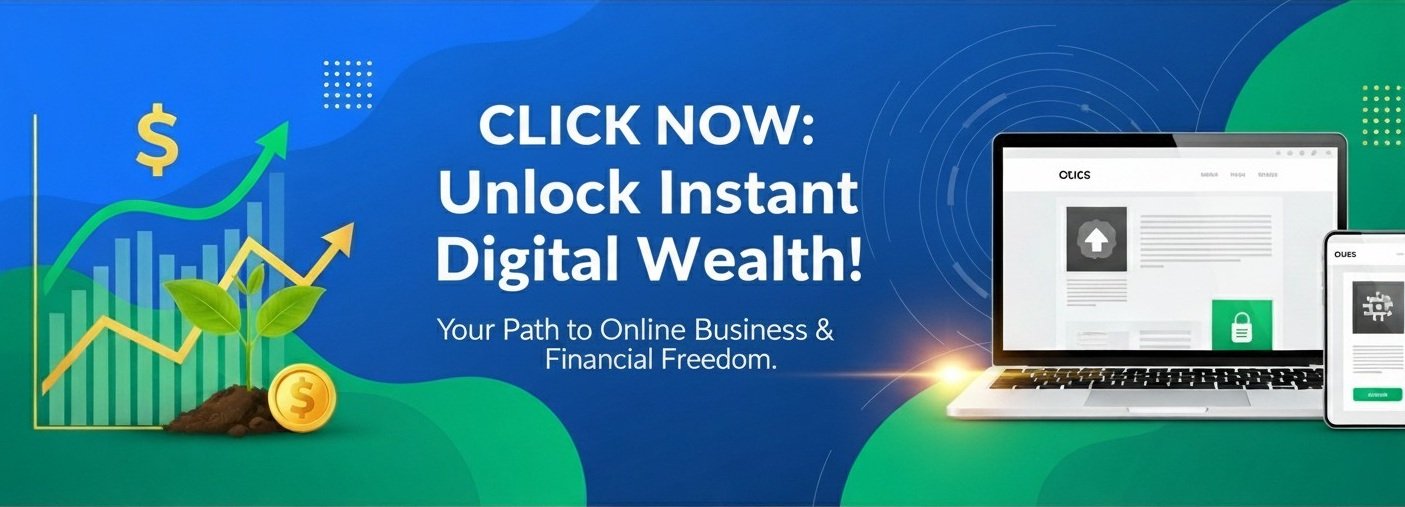Understanding Exchange-Traded Funds (ETFs)
Introduction to ETFs
In the world of investing, there are numerous financial instruments available, each with its own set of characteristics, risks, and potential rewards. Among these, Exchange-Traded Funds (ETFs) have gained significant popularity, especially among beginner investors, due to their simplicity, diversification, and cost-effectiveness. This guide aims to provide a comprehensive understanding of ETFs, how they function, and why they might be a valuable addition to your investment portfolio.
What is an ETF?
An Exchange-Traded Fund (ETF) is a type of investment fund that holds a collection of assets, such as stocks, bonds, or commodities. Unlike mutual funds, which are typically traded only at the end of the trading day, ETFs can be bought and sold on stock exchanges throughout the day, similar to individual stocks. This unique feature combines the diversification benefits of mutual funds with the trading flexibility of stocks.
To put it simply, an ETF is like a basket of various investments. When you buy a share of an ETF, you’re essentially buying a small piece of that basket, giving you exposure to all the assets within it. For a more detailed explanation, you can refer to this resource on Investopedia.
How Do ETFs Work?
The process of how ETFs work involves several key steps:
1. Creation:
An ETF provider, often a financial institution, creates the fund. They decide on the investment strategy, such as tracking a specific index (e.g., the S&P 500) or focusing on a particular sector (e.g., technology). The provider then gathers the underlying assets that will make up the fund.
2. Authorized Participants (APs):
Authorized Participants are typically large financial institutions that play a crucial role in the creation and redemption of ETF shares. They purchase large blocks of the underlying assets and exchange them with the ETF provider for large blocks of ETF shares, known as “creation units.”
3. Trading on Exchanges:
Once the ETF shares are created, they are listed on stock exchanges, such as the New York Stock Exchange (NYSE) or Nasdaq. Individual investors can then buy and sell these shares through a brokerage account, just like any other stock.
4. Price Determination:
The price of an ETF share fluctuates throughout the trading day based on supply and demand in the market. However, the price is also closely related to the fund’s Net Asset Value (NAV).
5. Net Asset Value (NAV):
The Net Asset Value (NAV) represents the total value of the ETF’s underlying assets, minus any liabilities, divided by the number of outstanding ETF shares. It’s calculated at the end of each trading day. While the market price of an ETF can sometimes deviate slightly from its NAV due to market forces, they tend to stay relatively close.
6. Redemption:
If there’s a need to reduce the number of outstanding ETF shares, Authorized Participants can exchange creation units of ETF shares back to the ETF provider for the underlying assets. This mechanism helps to keep the ETF’s market price in line with its NAV.
A helpful explanation of this process can also be found on NerdWallet.
Key Features and Benefits of ETFs
ETFs offer several attractive features that make them a popular choice for investors:
1. Diversification:
ETFs provide instant diversification by holding a basket of assets. This helps to reduce risk compared to investing in individual stocks or bonds, as your investment is spread across multiple holdings. For example, an ETF that tracks the S&P 500 index gives you exposure to 500 of the largest U.S. companies.
2. Cost-Efficiency:
ETFs generally have lower expense ratios compared to actively managed mutual funds. This means that a larger portion of your investment goes towards generating returns, rather than paying fees. The expense ratio is the annual fee charged to own the ETF, expressed as a percentage of your investment.
3. Liquidity:
ETFs are traded on stock exchanges, which means they can be bought and sold easily throughout the trading day. This provides investors with greater flexibility and the ability to react quickly to market changes.
4. Transparency:
Most ETFs disclose their holdings daily, allowing investors to see exactly what assets the fund holds. This transparency helps investors understand the fund’s investment strategy and potential risks.
5. Flexibility:
ETFs offer a wide range of investment options, allowing investors to target specific sectors, asset classes, or investment strategies. Whether you’re interested in technology stocks, emerging markets, or bonds, there’s likely an ETF that aligns with your investment goals.
6. Tax Efficiency:
ETFs are generally more tax-efficient than mutual funds. Due to their structure and trading mechanism, ETFs tend to generate fewer capital gains distributions, which can result in lower tax liabilities for investors.
You can find more information on the benefits of ETFs on websites like Vanguard.
Types of ETFs
ETFs come in various forms, each designed to track different assets or investment strategies. Here are some of the most common types:
1. Equity ETFs:
Equity ETFs, also known as stock ETFs, invest in a portfolio of stocks. They can track broad market indices, such as the S&P 500 or the Dow Jones Industrial Average, or focus on specific sectors, such as technology, healthcare, or energy.
- Broad Market ETFs: These ETFs aim to replicate the performance of a wide market index, providing diversified exposure to the overall stock market.
- Sector ETFs: These ETFs concentrate on specific industry sectors, allowing investors to target their investments based on their views on particular sectors.
- Style ETFs: These focus on the investment style, such as growth stocks (companies expected to grow earnings quickly) or value stocks (companies believed to be undervalued by the market).
2. Bond ETFs:
Bond ETFs invest in a portfolio of bonds, which are debt securities issued by governments or corporations. They can offer exposure to various types of bonds, such as government bonds, corporate bonds, or municipal bonds. Bond ETFs can provide income and help to diversify a portfolio.
- Government Bond ETFs: These invest in bonds issued by national governments.
- Corporate Bond ETFs: These invest in bonds issued by corporations.
- Short-Term/Long-Term Bond ETFs: These focus on bonds with different maturity dates.
3. Commodity ETFs:
Commodity ETFs invest in physical commodities, such as gold, silver, oil, or agricultural products. They can provide a way to gain exposure to the commodity markets, which can be useful for diversification or hedging against inflation.
* Precious Metals ETFs: These focus on precious metals like gold and silver.
* Energy ETFs: These invest in energy-related commodities like oil and natural gas.
* Agricultural ETFs: These provide exposure to agricultural commodities like corn, wheat, and soybeans.
4. Currency ETFs:
Currency ETFs invest in a single currency or a basket of currencies. These ETFs can be used to speculate on currency movements or hedge against currency risk.
5. Real Estate ETFs:
Real Estate ETFs invest in real estate investment trusts (REITs), which are companies that own and operate income-producing real estate. These ETFs can provide exposure to the real estate market and generate income.
6. International ETFs:
International ETFs invest in stocks or bonds of companies or governments located outside of the investor’s home country. They can provide diversification and exposure to different economies and markets.
- Developed Market ETFs: These invest in developed economies like the US, Europe, and Japan.
- Emerging Market ETFs: These invest in developing economies that have higher growth potential but also higher risk.
7. Inverse ETFs:
Inverse ETFs, also known as “bear” ETFs, are designed to perform opposite to the index or asset they track. For example, if the S&P 500 goes down by 1%, an inverse S&P 500 ETF would aim to go up by 1%. These ETFs are often used for short-term trading or hedging purposes.
8. Actively Managed ETFs:
Unlike passively managed ETFs, which aim to track a specific index, actively managed ETFs have a portfolio manager who selects the assets in the fund with the goal of outperforming a benchmark. These ETFs typically have higher expense ratios compared to passively managed ETFs.
9. Thematic ETFs:
Thematic ETFs invest in sectors or industries based on specific themes or trends, such as artificial intelligence, robotics, clean energy, or e-commerce. They allow investors to gain targeted exposure to these evolving areas of the market.
For a comprehensive overview of the different types of ETFs, you can visit iShares, a well-known ETF provider.
How to Invest in ETFs
Investing in ETFs is a straightforward process:
1. Open a Brokerage Account:
To buy and sell ETFs, you’ll need a brokerage account with a financial institution that allows trading in ETFs. Many online brokers offer commission-free ETF trading.
2. Research ETFs:
Before investing, it’s essential to research different ETFs to find those that align with your investment goals, risk tolerance, and time horizon. Consider factors such as the ETF’s investment strategy, expense ratio, trading volume, and historical performance.
3. Choose an ETF:
Select the ETF(s) you want to invest in based on your research. Ensure that the ETF’s investment objective and holdings match your investment strategy.
4. Place an Order:
Once you’ve chosen an ETF, you can place an order to buy shares through your brokerage account. You’ll need to specify the number of shares you want to purchase or the amount of money you want to invest.
5. Monitor Your Investment:
After purchasing ETF shares, it’s crucial to monitor your investment regularly. Keep track of the ETF’s performance, as well as any changes in your overall portfolio or investment goals.
If you’re new to ETF investing, you might find this guide on Ally.com helpful.
Factors to Consider Before Investing in ETFs
Before investing in ETFs, it’s essential to consider several factors:
1. Investment Goals:
Determine your investment objectives. Are you investing for long-term growth, income, or a specific goal like retirement or buying a house? Different ETFs are designed to meet different investment goals.
2. Risk Tolerance:
Assess your risk tolerance, or how much you’re willing to lose on your investments. If you’re risk-averse, you may want to focus on less volatile ETFs, such as bond ETFs or broad market ETFs. If you’re comfortable with more risk, you might consider sector ETFs or emerging market ETFs.
3. Time Horizon:
Consider your time horizon, or how long you plan to invest. If you have a long time horizon, you may be able to withstand more short-term volatility and invest in ETFs with higher growth potential. If you have a shorter time horizon, you may want to focus on more conservative investments.
4. Expense Ratio:
Pay attention to the ETF’s expense ratio, which is the annual fee charged to own the ETF. Lower expense ratios mean that more of your investment goes towards generating returns.
5. Liquidity and Trading Volume:
Ensure the ETF has sufficient trading volume, which indicates how easily it can be bought or sold. Higher trading volume generally means tighter bid-ask spreads and lower transaction costs.
6. Diversification:
Evaluate the ETF’s diversification. A well-diversified ETF can help reduce risk by spreading your investment across multiple holdings.
7. Underlying Index or Holdings:
Understand the index or assets that the ETF tracks. This will help you determine the ETF’s investment strategy and potential risks and returns.
ETFs vs. Mutual Funds
While ETFs and mutual funds both pool investors’ money to invest in a diversified portfolio of assets, there are some key differences:
Trading:
- ETFs: Traded on stock exchanges throughout the day, like individual stocks.
- Mutual Funds: Bought and sold only at the end of the trading day, with prices based on the fund’s NAV.
Pricing:
- ETFs: Prices fluctuate throughout the day based on market supply and demand, although they tend to track the NAV.
- Mutual Funds: Priced at the end of the trading day based on the fund’s NAV.
Expenses:
- ETFs: Generally have lower expense ratios compared to actively managed mutual funds.
- Mutual Funds: Can have higher expense ratios, especially for actively managed funds.
Tax Efficiency:
- ETFs: Generally more tax-efficient due to their structure and trading mechanism, resulting in fewer capital gains distributions.
- Mutual Funds: Can generate more capital gains distributions, leading to higher tax liabilities for investors.
Minimum Investment:
- ETFs: Can often be purchased with no minimum investment, or the price of one share.
- Mutual Funds: Sometimes have minimum investment requirements.
Risks Associated with ETFs
While ETFs offer many benefits, it’s important to be aware of the potential risks:
1. Market Risk:
ETFs are subject to market risk, which is the possibility that the value of the underlying assets in the fund could decline due to economic conditions, market events, or other factors.
2. Tracking Error:
ETFs that track an index may experience tracking error, which is the difference between the ETF’s performance and the performance of the index it’s designed to follow.
3. Liquidity Risk:
While most ETFs are highly liquid, some ETFs with low trading volume may be subject to liquidity risk, which is the risk that you may not be able to buy or sell shares quickly or at a favorable price.
4. Concentration Risk:
Some ETFs may be concentrated in a specific sector or asset class, which can increase risk if that sector or asset class performs poorly.
5. Counterparty Risk:
ETFs that use derivatives or swap agreements may be exposed to counterparty risk, which is the risk that the other party to the transaction may default on their obligations.
It’s crucial to understand these risks before investing in ETFs, as explained in more detail on Investopedia.
Conclusion
ETFs offer a compelling combination of diversification, cost-efficiency, and flexibility, making them an attractive investment option for both beginner and experienced investors. By understanding how ETFs work, their various types, and the associated risks, you can make informed decisions and potentially enhance your investment portfolio. Whether you’re looking to invest in stocks, bonds, commodities, or a specific sector, there’s likely an ETF that can help you achieve your financial goals.
Disclaimer:
This article is for informational purposes only and does not constitute financial advice. Please consult a qualified financial advisor before making any investment decisions.
Related External Links
- Investopedia: https://www.investopedia.com/terms/e/etf.asp
- NerdWallet: https://www.nerdwallet.com/article/investing/what-is-an-etf
- Vanguard: https://www.vanguardinvestor.co.uk/articles/latest-thoughts/how-it-works/etfs-explained-what-are-they-and-how-do-they-work
- iShares (BlackRock): https://www.ishares.com/uk/individual/en/investing-basics/what-is-an-etf
- Ally.com: https://www.ally.com/stories/invest/etfs-for-beginners/








